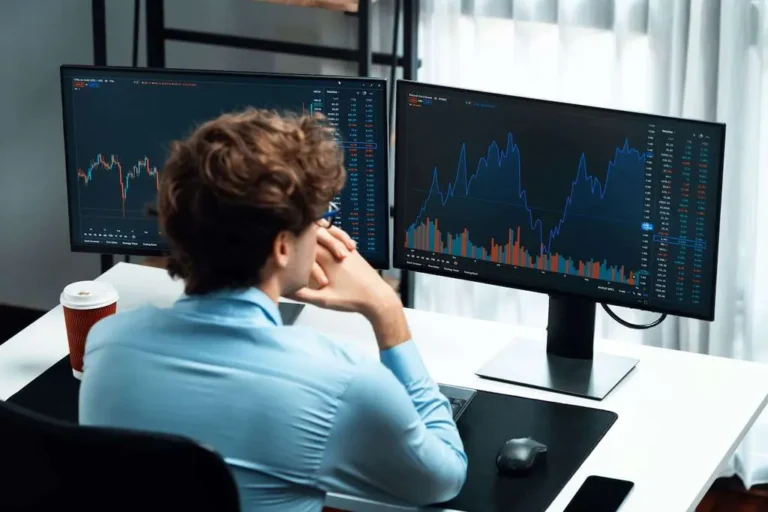Content
What was once a niche venue for certain sophisticated parties negotiating large- sized trades is now a significant part of the capital markets. One is that the trading volume, as well as the disclosure of bid and ask quotes, is cloaked from the price discovery process that occurs on exchanges and related ATS. This activity also fragments the market and allows those participating in dark pools to observe “intent,” which does not show up as quotes on the public markets. It robs the public-market Digital wallet system of the full depth of the market’s willingness to buy or sell. Moreover, trading in dark pools circumvents surveillance authorities that monitor trading activity.
Elevate Your ATS with Expert Regulatory Support
From roughly 10% market share in 2013, the ATS collectively, now, have closer to 40% market share. Alternative Trading Systems play a crucial role in the modern trading landscape, offering a more efficient and cost-effective alternative to traditional exchanges. They offer several benefits, including lower costs, faster trade execution, and the ability to trade large volumes of securities without impacting the market price. Instead of routing your order to an exchange, your brokerage firm may execute your order itself or may route your order to an execution venue that isn’t registered as an exchange or an ATS. But all off-exchange, off-ATS activity must take place at a registered broker-dealer, so it’s still subject to SEC and FINRA oversight. And while these venues may https://www.xcritical.com/ be considered “dark,” all trades must be reported to the appropriate trade reporting facility for the type of security being traded, just like trades occurring on an ATS.
Rulemaking and Linkages, 1975 – 2005

An ATS is particularly useful for those who are conducting large quantities of trading, such as investors and professional traders, since the skewing of the market price can be avoided as with regular stock exchanges. It is because trading conducted on ATS is not publicly available and does not appear on national exchange order books. There are also fewer rules involved, other than those governing conduct. These late 1990s regulatory changes did encourage the proliferation of these alternative trading venues. By 2009, the number of active dark pools had grown to 32 and accounted for 8% of the shares traded. Over the past several years, alternative trading system both the number of active dark pools and the percentage of shares traded in dark pools has increased.
- Duplicates of the reports required by paragraph (b)(9) of this section shall be provided to surveillance personnel of such self-regulatory authority upon request.
- This can make them an attractive option for traders looking to reduce their trading costs.
- FINRA runs dozens of complex surveillance patterns to detect a wide variety of compliance issues and suspicious conduct to protect investors and to maintain the integrity of U.S. financial markets.
- These trading venues were also a place for larger-sized or “block” trades.
- The NYSE banned the practice because it is inconsistent with the exchange’s level-playing-field policy.
Alternative Trading System (“ATS”) List
The new ways of conducting business may profoundly change the balance of market power and tilt the playing field. Although by itself it does not create asymmetry or an uneven playing field—and it does add to market liquidity—HFT seems to put the pace of human deliberation at a disadvantage. HFT can reduce the benefits of stop orders for regular investors who employ them as a means of managing their risk.
Dark pools entail trading on an ATS by institutional orders executed on private exchanges. I focus on a dimension that is not usually considered in the same breath as ATSs innovation. The technological transition from manual to electronic markets is widely credited with generating secular increases in the quality of trading outcomes.
While ATSs are a crucial part of the modern trading landscape, understanding how they work and the role they play in the broader financial ecosystem can be challenging. This glossary entry aims to demystify the concept of ATSs, providing a comprehensive overview of their structure, operation, benefits, and drawbacks. Whether you’re a seasoned trader or a newcomer to the field, this guide will equip you with the knowledge you need to navigate the world of ATSs with confidence.

As the investor sells the stock in small blocks they will get less per share in each subsequent transaction, thereby obtaining less per share in the aggregate than if they had sold them all at once in one block. Alternative Trading Systems play an important role not only to compete with the traditional exchanges but to tear down the barriers formed by the traditional exchanges by creating more options for more people. However, ATSs also have some drawbacks, including the risk of system failures, the potential for market manipulation, and the lack of transparency compared to traditional exchanges. As such, it’s important for traders to fully understand how ATSs work and the risks involved before deciding to use them.
Dark pools were in many ways replacing the traditional “upstairs” market, while also providing services conventionally provided only by registered exchanges. Instead, using dark pools, participants can narrowcast (to a restricted audience) an “indication of interest” to buy or sell a specific quantity of securities at a set price or a price to be determined. For example, a dark pool participant might indicate interest in buying 40,000 shares of IBM at the 2 p.m. In this way the dark pool participant can arrange a large purchase with less risk of pushing up the price by doing so. High-frequency trading, flash trading, and dark pools all have their origin in two key marketplace innovations—electronic trading and the closely related alternative trading systems(ATS). Electronic trading has quickly come to dominate traditional trading, both on exchanges and in over-the-counter markets.
There are other trading venues in the modern equity market than its exchanges, including the neglected cousins of the stock market, alternative trading systems (‘ATSs’). ATSs last year-more volume than the entire Canadian stock market-popular and academic discussion of equity market structure overwhelmingly emphasizes the national stock exchanges. ‘Dark’ simply means that ‘quotes’ posted by traders-orders expressing their willingness to trade at a specific price-on these trading venues are not included in the public quotation feed that distributes quote data to all market participants. While this fact is important, emphasizing it has confined analysis of ATSs to an unduly narrow range of debates.
We optimize your compliance workflows, from customer onboarding to surveillance, aiming for efficiency and regulatory adherence in every operation. We tailor regulatory strategies that resonate with your business goals, allowing for sustainable growth and operational efficiency. • Offers anonymity, alternative pricing structures, and trading hours. Users are prohibited from sharing or downloading any material for publication or commercial purposes without written permission from the Executive Director. Requests for permission must be submitted by email and specify the material requested and for what purpose. The virtual museum and archive is copyrighted by the SEC Historical Society.
This platform eliminated both the specialists and the market makers. These trading venues were also a place for larger-sized or “block” trades. Relatively quickly, alternative trading systems started handling a significant amount of securities order volume.
Dark pools—which are owned by exchanges, broker-dealers, or independently—use a more efficient electronic trading platform to negotiate large deals and do not require a firm to identify itself or the prices at which it is willing to trade. Transactions made through dark pools are recorded as over-the-counter, not exchange, transactions, and the size, price, and time of consummation are not publicly disclosed. The TABB Group, a financial markets research firm, estimates that profits from HFT were $21 billion in 2008—not an easy year for financial markets. The top broker-dealers, such as Goldman Sachs; top hedge funds, such as Citadel; and independent firms, such as GETGO, invest heavily in supercomputers and in software designed for the business. The considerable cost explains the high-profile legal cases filed last summer after Goldman Sachs charged a former employee with stealing the computer code to its trading algorithm. Competition for lucrative HFT business is so fierce that firms pay to locate their computers as close as possible to those of the exchanges and ATS to minimize “latency,” or delays in communication.
Some examples of ATS include electronic communication networks, dark pools, crossing networks, and call markets. A stock exchange is a heavily regulated marketplace that brings together buyers and sellers to trade listed securities. An ATS is an electronic venue that also brings buyers and sellers together; however, it does not have any regulatory responsibilities (though it is regulated by the SEC) and trades both listed and unlisted securities. (vii) The reports provided for in paragraph (b)(2) of this section shall be considered filed upon receipt by the Division of Trading and Markets, at the Commission’s principal office in Washington, DC. Duplicates of the reports required by paragraph (b)(9) of this section shall be provided to surveillance personnel of such self-regulatory authority upon request. All reports filed pursuant to this paragraph (b)(2) and paragraph (b)(9) of this section shall be deemed confidential when filed.
Leave a Reply